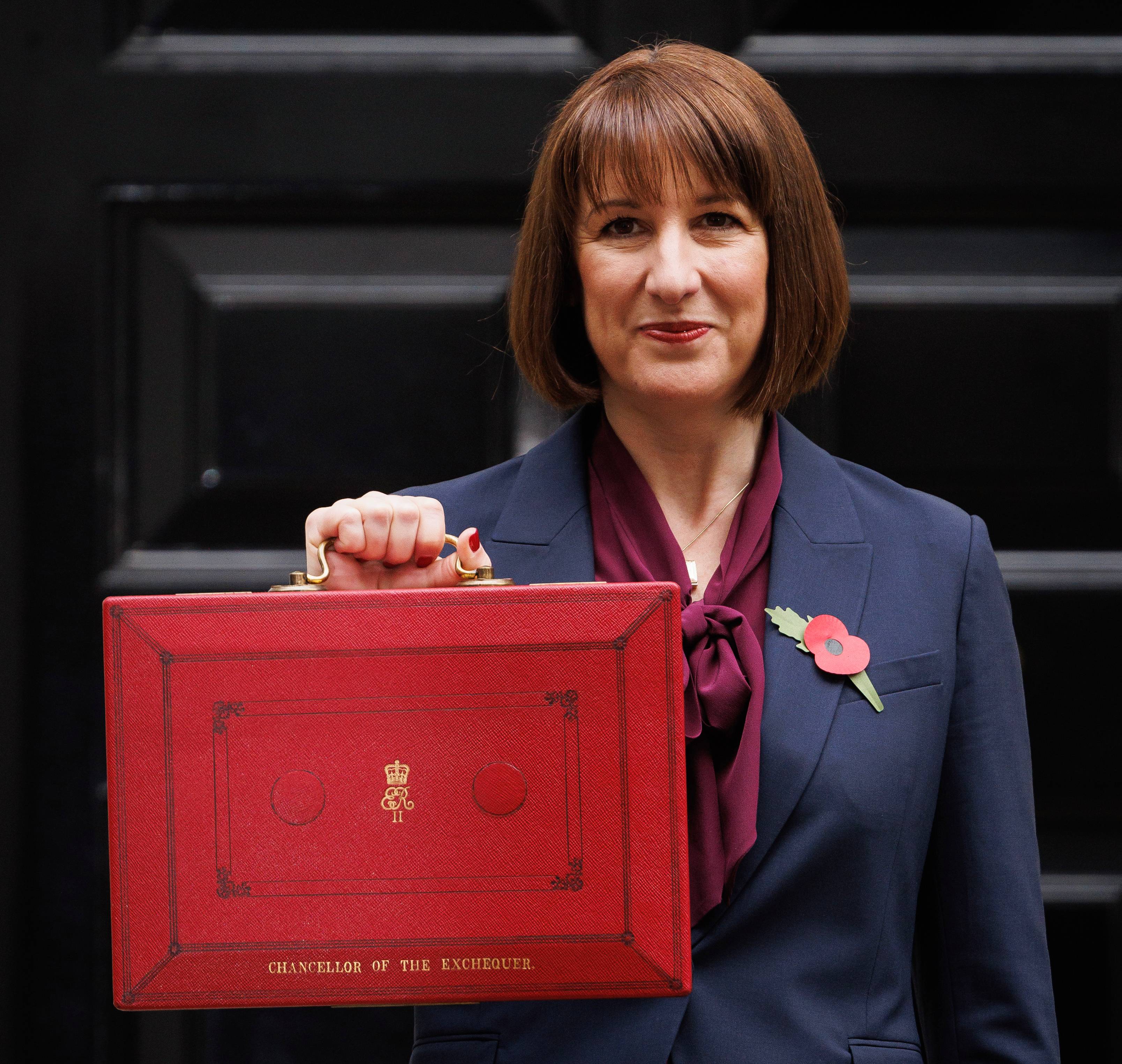Review of the week: Spending the big bucks
The mean-average American family is worth $1 million after years of soaring growth, wealth and income. This matters for inflation, future interest rates and the strength of the dollar.

Article last updated 30 September 2025.
Quick take:
- The mean average US household net worth soared to 23% to $1,063,700 between 2019 and 2022
- Fewer than two 0.25% US interest rate cuts are now forecast for 2024, down from six at the start of the year
- US GDP growth is expected to have slowed to 2.5% in Q1, down from an upwardly revised 3.4% in Q4
The longer that inflation disappoints in the US and the American economy keeps powering along, the fewer forecast cuts in US interest rates and the longer we all must wait for them.
At the beginning of the year, roughly six 25-basis-point cuts were expected in the US. However, those expectations have steadily lessened and now fewer than two are forecast before 2024 is out. Markets are fickle though, and can cycle rapidly from the sunniest optimism to the depths of despair. The last couple of months delivered less-than-ideal signals on inflation, with headline CPI reaccelerating from 3.1% to 3.5%. A short-term uptick in oil prices didn’t help. Yet perhaps the great underlying driver of all these disappointments, ironically, is something that’s typically regarded a ‘good thing’: a much-stronger-than-expected American economy.
Americans are wealthier than ever. (They feel miserable, but that’s another story!) Remarkably, the average household is worth more than $1 million. Now, that’s skewed upwards because there are more than a few extraordinarily rich households in the world’s greatest economy. The median US household is worth just $192,900. But even poorer families have benefited from the lurch higher in wages since the pandemic – the median household wealth rose 37% in just three years.
Americans are getting paid more and spending more (retail sales grew more than double what was expected in March). To paraphrase economist Milton Friedman, when the economy is riding high and people and businesses are spending, more money chases the goods and services on offer in an economy. If there aren’t enough goods and services to cater for that increased demand, prices rise and inflation – the rate of change in the general level of prices – accelerates. This no doubt is part of the upward pressure on inflation that is taking longer than we would hope to die away.
And we should note that it’s not just people and businesses buying lots of goods and services in America today. The US federal government is spending money hand over fist. The US fiscal deficit (the amount of money it’s spending above what it receives in taxes) is running at about 6.3% of GDP. This, too, soaks up goods and services in the economy. Large government deficits also influence the economy through the admittedly banal reality that things must be paid for. Because the government is spending more than it receives, it must borrow more money through bond markets to plug the gap. The US government is issuing significantly more debt in recent years than pre-pandemic norms. And when supply rises, prices tend to fall – unless demand keeps up.
The US Treasury is issuing $215 billion-odd this week alone in a several auctions that will be closely watched. If buying starts to falter, it could cause some mild drama in bond markets. So far, investors have been happy to hold US debt at these sorts of yields, so it should pass without incident. Yet these dynamics, over the very long term, do need to be addressed.
| Index |
1 week |
3 months |
6 months |
1 year |
| FTSE All-Share |
-1.3% |
6.6% |
8.3% |
4.2% |
| FTSE 100 |
-1.2% |
7.2% |
7.4% |
4.1% |
| FTSE 250 |
-1.6% |
3.7% |
14.5% |
4.6% |
| FTSE SmallCap |
-1.7% |
2.9% |
10.4% |
6.1% |
| S&P 500 |
-3.0% |
5.0% |
14.3% |
21.6% |
| Euro Stoxx |
-0.5% |
8.8% |
17.1% |
9.3% |
| Topix |
-5.9% |
3.2% |
11.1% |
14.8% |
| Shanghai SE |
1.5% |
9.7% |
0.6% |
-13.2% |
| FTSE Emerging |
-3.2% |
6.1% |
6.7% |
5.9% |
Source: EIKON, data sterling total return to 19 April
| These figures refer to past performance, which isn’t a reliable indicator of future returns. The value of investments and the income from them may go down as well as up and you may not get back what you originally invested. |
Red hot dollar
High government borrowing, red-hot spending from households and inflation creeping higher are what have brought talk of ‘higher for longer’ interest rates back into vogue after a brief hiatus at the tail end of last year.
It’s perhaps overly obvious, but one person’s borrowing rate is another’s return for lending money. Because US rates are now forecast to be higher for much longer, there’s more ‘risk-free’ return to be made from buying and holding US government bonds this year. That greater return attracts investors from around the world, who sell their local currencies and buy dollars so they can get their US Treasuries. This makes the dollar more expensive compared with other currencies. The dollar has appreciated almost 5% against an average of its major trading partners so far this year.
You can easily get twisted up in currencies and their effects – both theoretical and real. Yet a stronger dollar should, all else equal, ease inflation in the US and export it to other nations through higher prices of commodities and other imported goods in other currencies. We don’t expect this to be a wave that changes the flow of current downward trends, yet it’s a phenomenon to keep in mind. We think the UK’s inflation should continue to drop over the coming months, however a strong dollar may slow down the falls slightly.
One interesting thought to mull over is the extent of ‘an economy’ in the modern world. There are many things that cannot be moved easily – if you want a fresh coffee in New York, it won’t help you if espressos are €1 at the counter in Rome. Yet there are many markets for goods and services that can spill over from one nation to another. Maybe you spot a fridge that’s much cheaper in Canada so you buy it and arrange delivery while still saving a bunch. With digital payments and the internet, it’s even easier to buy all sorts of goods from anywhere in the world. Businesses are getting in on the act too. There are numerous reports of US firms muscling into professional services in London and elsewhere, poaching high-profile talent by offering American wages.
Then there’s the old-fashioned way to take advantage of lower prices abroad and a strong currency – go overseas, whether to travel or live. There seem to be a whole lot of Americans abroad right now, whether retirees doing their big tour, working-age families enjoying holidays or students opting for an exotic university experience for a fraction of the price back home. This is anecdotal, but there are some statistics that hint at it as well.
The US is booming and its businesses, households and government are all spending a lot of money. That cash appears to be spilling over into Europe and other nations as well, no doubt boosting their relatively lacklustre economies. For how long the US juggernaut will roll on is anyone’s guess. We get a pulse check on Thursday when the advance estimate of first-quarter GDP is released.
If you missed our Q1 Investment Insights webinar, you can watch it here.
If you have any questions or comments, or if there’s anything you would like to see covered here, please get in touch by emailing review@rathbones.com. We’d love to hear from you.



